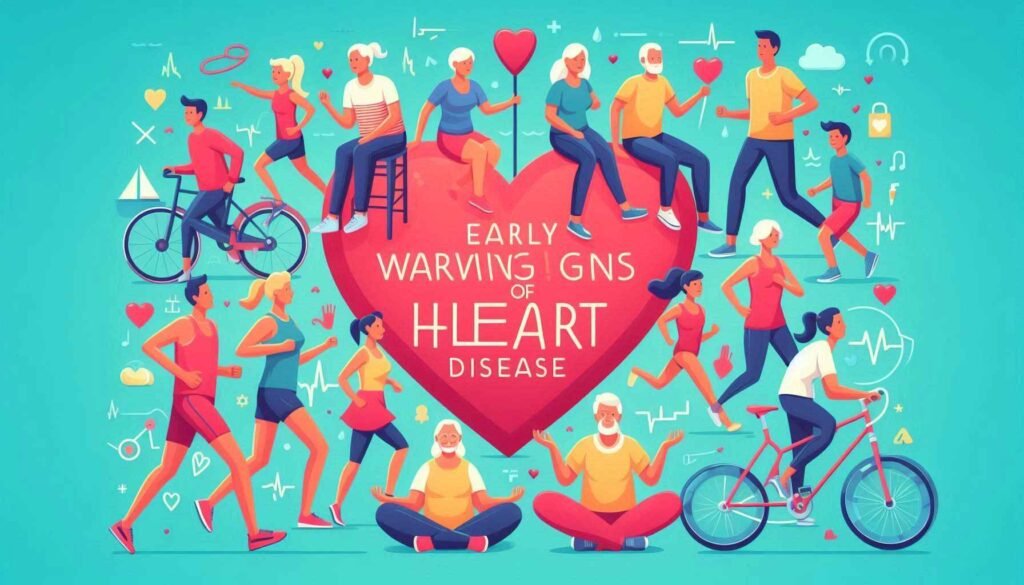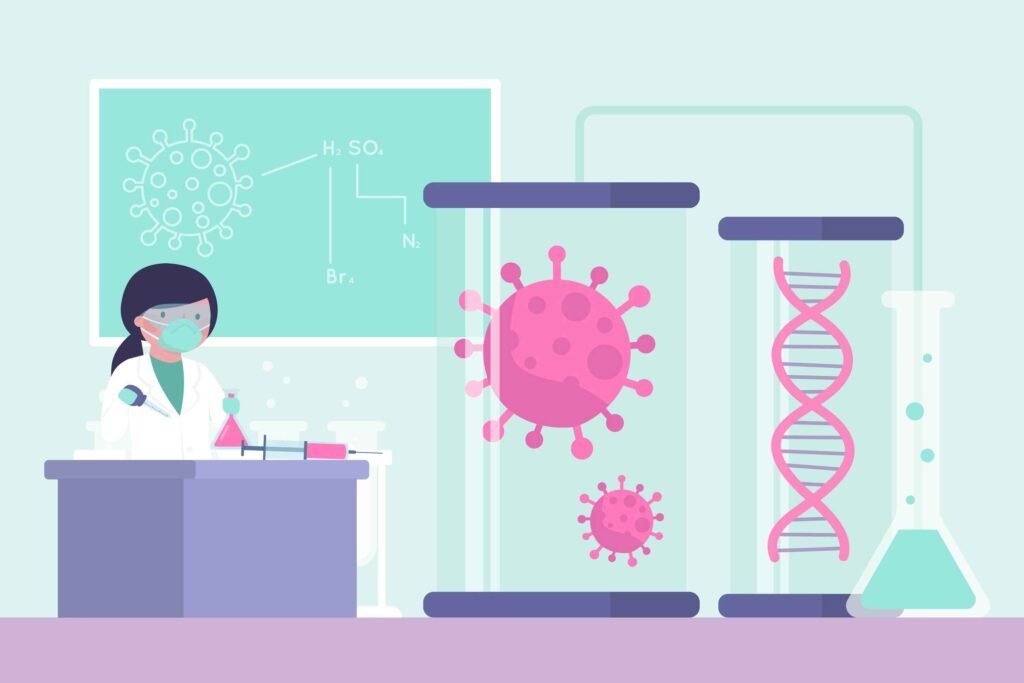
Understanding Vaccine Development: From Research to Rollout
Understanding Vaccine Development: From Research to Rollout (First Half)
Vaccines play a crucial role in protecting humanity from deadly diseases. From eradicating smallpox to managing the global COVID-19 pandemic, the vaccine development process is a remarkable blend of science, innovation, and teamwork. This article explores the critical stages of vaccine development, focusing on how vaccines progress from research to public rollout.
Introduction: The Importance of Vaccines
Vaccines are among the most cost-effective tools for public health. Each year, they prevent millions of deaths by stopping the spread of infectious diseases. Therefore, understanding how vaccines are developed helps people appreciate the rigorous steps involved in ensuring their safety and efficacy.
The Phases of Vaccine Development
1. Research and Discovery: Laying the Foundation
The journey begins in laboratories where scientists investigate pathogens—bacteria, viruses, or other microorganisms that cause diseases. During this stage, researchers aim to identify specific antigens, which are parts of the pathogen that can trigger the immune system to respond.
- Basic Research: Scientists study the pathogen’s genetic material, structure, and behavior within the human body. This research helps them understand how the pathogen causes disease.
- Target Identification: Researchers pinpoint antigens that might produce a strong immune response. They perform extensive testing to ensure these antigens are suitable for use in a vaccine.
For example, while developing COVID-19 vaccines, scientists identified the SARS-CoV-2 virus’s spike protein as a key target for generating immunity.
2. Preclinical Testing: Assessing Early Safety
Before testing vaccines in humans, scientists conduct preclinical studies. They perform these tests in laboratories using cell cultures and animal models. This step helps evaluate early safety and effectiveness.
- Safety Assessment: Researchers check whether the vaccine candidate causes harmful side effects. This step helps identify any potential safety risks.
- Immunogenicity Testing: Scientists assess whether the vaccine produces the desired immune response.
Although success in preclinical tests does not guarantee effectiveness in humans, these studies reduce risks before clinical trials begin.
Clinical Trials: The Road to Approval
Once a vaccine clears preclinical testing, it advances to clinical trials involving human participants. Researchers conduct these trials in three distinct phases.
Phase 1: Prioritizing Safety
In Phase 1 trials, a small group of healthy volunteers (usually 20 to 100 people) receives the vaccine. This phase focuses on:
- Evaluating Safety: Researchers identify potential side effects and monitor the participants’ responses.
- Determining Dosage: Scientists establish the appropriate dosage to balance safety and effectiveness.
For instance, early trials for mRNA-based COVID-19 vaccines tested different dosages to find the most effective and safest option.
Phase 2: Expanding the Scope
Phase 2 trials involve several hundred volunteers. The goals of this phase include:
- Measuring Immunogenicity: Researchers assess how effectively the vaccine stimulates the immune system.
- Collecting Safety Data: Scientists continue to monitor side effects and refine safety assessments.
- Identifying Administration Methods: They determine the best way to administer the vaccine, such as through intramuscular or subcutaneous injection.
During this phase, researchers often divide participants into groups based on age, health conditions, or risk factors. This approach helps evaluate how the vaccine performs in different populations.
Phase 3: The Final Test
Phase 3 trials involve thousands, or even tens of thousands, of participants. This phase is crucial for confirming the vaccine’s effectiveness in preventing disease. The primary goals are to:
- Verify Efficacy: Researchers assess how well the vaccine protects against infection.
- Identify Rare Side Effects: Large-scale testing helps detect side effects that might not have appeared in earlier phases.
To ensure broad applicability, these trials occur in multiple locations and diverse populations. After completing Phase 3, developers submit the results to regulatory agencies for approval.
Regulatory Approval: Ensuring Safety and Effectiveness
Once developers complete successful clinical trials, they submit the data to regulatory bodies like the FDA (Food and Drug Administration) in the United States or the EMA (European Medicines Agency) in Europe. The review process includes several key steps:
- Data Examination: Regulators carefully analyze the clinical trial data to confirm safety, efficacy, and manufacturing quality.
- Facility Inspections: Officials inspect production facilities to ensure they comply with Good Manufacturing Practices (GMP).
Regulatory approval means the vaccine meets strict standards for safety and effectiveness. In urgent situations, such as pandemics, vaccines may receive Emergency Use Authorization (EUA) to speed up public access while additional data is gathered.
Understanding Vaccine Development: From Research to Rollout (Second Half)
In the first half of this article, we covered the initial stages of vaccine development, including research, preclinical testing, and clinical trials. Now, let’s explore what happens next—how vaccines move from production to distribution, the challenges of rollout, and ongoing safety monitoring.
Manufacturing: From Lab to Large-Scale Production
After regulatory bodies approve a vaccine, manufacturers must produce it on a large scale to meet global demand. This phase is resource-intensive and requires careful planning.
1. Scaling Up Production
Scaling up production involves replicating the laboratory process on an industrial level. Manufacturers need to:
- Build Specialized Facilities: These facilities must maintain sterile environments to prevent contamination.
- Ensure Consistent Quality: Every batch must meet the same safety and efficacy standards proven in clinical trials.
- Manage Supply Chains: Manufacturers must secure large quantities of materials, such as vials, syringes, and adjuvants (ingredients that boost the immune response).
For instance, the production of mRNA vaccines for COVID-19 required new infrastructure to produce and store mRNA strands effectively.
2. Quality Control and Assurance
Each batch of vaccines undergoes strict quality control testing. These tests confirm that:
- Purity: The vaccine contains no contaminants.
- Potency: The vaccine effectively triggers an immune response.
- Stability: The vaccine remains effective during storage and transport.
Regulatory agencies oversee these quality checks to ensure vaccines remain safe and effective.
Distribution: Getting Vaccines to the Public
After manufacturers produce the vaccines, the next step is distributing them efficiently and equitably. This phase poses significant logistical challenges, especially for global distribution.
1. Cold Chain Logistics
Many vaccines need specific storage conditions to stay effective. For example:
- Ultra-Cold Storage: Some vaccines, like certain COVID-19 vaccines, require storage at -70°C (-94°F).
- Maintaining Cold Chain Integrity: Health organizations must keep vaccines at the correct temperature throughout transportation, from production facilities to vaccination centers.
To support cold chain logistics, countries invest in refrigerated trucks, portable cold boxes, and specialized freezers.
2. Distribution Strategies
Governments and health organizations develop strategies to distribute vaccines effectively. These strategies typically include:
- Prioritizing High-Risk Groups: Vaccination programs often begin with healthcare workers, the elderly, and individuals with pre-existing health conditions.
- Educating the Public: Public health campaigns inform people about vaccine benefits, safety, and where they can get vaccinated.
- Promoting Global Cooperation: Initiatives like COVAX aim to ensure low- and middle-income countries receive vaccines equitably.
3. Overcoming Distribution Challenges
Distribution efforts face several obstacles, especially in under-resourced areas. These challenges include:
- Reaching Remote Regions: Poor infrastructure can make it difficult to deliver vaccines to rural or isolated communities.
- Limited Storage Facilities: Some areas lack the necessary cold storage to keep vaccines effective.
- Addressing Public Hesitancy: Misinformation and distrust can discourage people from getting vaccinated.
Health authorities work closely with communities to overcome these challenges and ensure widespread vaccination.
Monitoring Safety After Rollout
Even after distributing vaccines, health agencies continuously monitor their safety and effectiveness. This ongoing process helps protect public health.
1. Post-Marketing Surveillance (Phase 4)
Researchers conduct Phase 4 trials after the vaccine becomes publicly available. This phase helps:
- Identify Rare Side Effects: Some side effects only appear after millions of people receive the vaccine.
- Evaluate Long-Term Efficacy: Researchers track how long immunity lasts and determine if booster shots are necessary.
2. Reporting Adverse Events
Healthcare providers and the public report potential side effects to national reporting systems. For example:
- VAERS (Vaccine Adverse Event Reporting System) in the United States collects and investigates reports of adverse reactions.
- Global Monitoring Systems share safety information between countries to identify patterns quickly.
3. Updating Vaccines
Viruses can mutate, which sometimes reduces vaccine effectiveness. Scientists respond by developing booster shots or updated vaccines. For instance:
- COVID-19 Variants: New variants led to updated vaccines to maintain protection.
- Flu Vaccines: These vaccines are updated annually to match the most common flu strains.
Challenges in Vaccine Rollout
While vaccines are essential for public health, several challenges complicate their rollout. Addressing these issues is crucial for successful immunization programs.
1. Combating Vaccine Hesitancy
Misinformation, cultural beliefs, and distrust in healthcare systems can lead to vaccine hesitancy. Strategies to combat this include:
- Providing Clear Information: Health authorities share transparent information about vaccine safety and benefits.
- Engaging Communities: Local leaders and influencers play a key role in promoting vaccination.
2. Addressing Global Inequality
Wealthy countries often secure vaccines more quickly, while poorer countries face delays. Global initiatives like COVAX work to ensure fair distribution. Investing in healthcare infrastructure helps countries prepare for future vaccination campaigns.
3. Overcoming Political and Logistical Barriers
Conflicts, political instability, and logistical challenges can delay vaccine distribution. International cooperation and humanitarian efforts support vaccine delivery in these regions.
Understanding Vaccine Development: From Research to Rollout (Third Half)
In the first two parts of this series, we explored the meticulous processes of vaccine research, testing, clinical trials, and regulatory approval. Now, let’s dive into the final stages: the manufacturing process, global distribution, post-rollout monitoring, and the real-world challenges of vaccine implementation.
Manufacturing: Scaling Up for the Masses
Once regulatory authorities approve a vaccine, manufacturers must produce it in large quantities to meet demand. Scaling up from lab production to mass manufacturing is no small feat—it requires precision, infrastructure, and stringent quality control.
1. The Manufacturing Process
Vaccine production is highly specialized and involves multiple steps to ensure each dose is safe and effective. Key stages in the manufacturing process include:
- Antigen Production: Scientists produce the antigen, which is the key ingredient that triggers an immune response. Depending on the type of vaccine, this may involve growing viruses, bacteria, or generating synthetic components like mRNA.
- Purification: Manufacturers purify the antigen to remove unwanted materials. This step ensures the vaccine contains only what’s necessary for protection.
- Formulation: The purified antigen is combined with stabilizers, preservatives, and sometimes adjuvants to enhance the immune response.
For example, mRNA vaccines for COVID-19 require careful handling of the fragile mRNA strands, which are encased in lipid nanoparticles to protect them during delivery.
2. Ensuring Quality Control
Every batch of vaccines undergoes rigorous quality control testing before it reaches the public. This testing verifies:
- Purity: The vaccine is free from contaminants.
- Potency: The vaccine effectively stimulates an immune response.
- Stability: The vaccine maintains its effectiveness under storage conditions.
Regulatory agencies, like the FDA or WHO, oversee these checks to guarantee consistency. Any deviation from quality standards can lead to delays or the destruction of entire batches.
Global Distribution: Getting Vaccines Where They’re Needed
Producing vaccines is only half the battle. The next challenge lies in delivering them to people worldwide, especially in times of urgent need, such as pandemics. Effective distribution relies on meticulous planning and collaboration.
1. The Importance of Cold Chain Logistics
Many vaccines require specific storage temperatures to remain effective. Cold chain logistics refers to the systems in place to maintain these temperatures during storage and transportation.
- Ultra-Cold Storage: Some vaccines, like certain mRNA-based COVID-19 vaccines, need to be stored at -70°C (-94°F). This requires specialized freezers and shipping containers.
- Cold Chain Management: From production facilities to vaccination sites, maintaining the correct temperature is essential. Any break in the cold chain can compromise the vaccine’s effectiveness.
2. Strategies for Effective Distribution
Governments, healthcare organizations, and global initiatives develop distribution plans to ensure vaccines reach the right people at the right time. These strategies often include:
- Prioritization of Vulnerable Groups: Countries typically begin by vaccinating healthcare workers, the elderly, and people with underlying health conditions.
- Public Awareness Campaigns: Informing people about where and when they can get vaccinated helps ensure smooth rollouts.
- Global Partnerships: Programs like COVAX work to ensure lower-income countries receive vaccines alongside wealthier nations.
3. Addressing Distribution Challenges
Several challenges can hinder effective distribution:
- Infrastructure Limitations: In rural or remote areas, limited healthcare facilities and poor transportation networks can delay vaccine delivery.
- Political and Social Barriers: Conflicts, government instability, and vaccine hesitancy can slow the rollout.
- Supply Chain Bottlenecks: Shortages of materials like syringes, vials, and dry ice can impact delivery timelines.
Overcoming these challenges requires innovative solutions, international cooperation, and local community engagement.
Post-Rollout Monitoring: Ensuring Continued Safety
Even after vaccines are distributed and administered, monitoring their safety and effectiveness remains essential. This ongoing process ensures that vaccines continue to protect populations over time.
1. Phase 4 Trials and Surveillance
Once a vaccine is in widespread use, researchers conduct Phase 4 trials to gather real-world data. These trials help:
- Identify Rare Side Effects: Large-scale vaccination campaigns can reveal side effects not seen in smaller trials.
- Measure Long-Term Efficacy: Researchers monitor how long immunity lasts and whether booster shots are needed.
2. Reporting Systems for Adverse Events
Healthcare providers and the public can report any side effects or adverse reactions through national and international systems. Examples include:
- VAERS (Vaccine Adverse Event Reporting System) in the United States.
- WHO’s Global Advisory Committee on Vaccine Safety for worldwide monitoring.
These systems play a crucial role in maintaining public confidence and ensuring swift responses to potential safety concerns.
3. Adapting to New Challenges
As viruses mutate, vaccines may need updates to remain effective. For instance:
- COVID-19 Variants: The emergence of new variants led to the development of updated vaccines and booster shots.
- Annual Flu Shots: The flu virus evolves each year, prompting scientists to modify vaccines accordingly.
Continuous research and adaptation ensure vaccines remain powerful tools against evolving threats.
Real-World Challenges in Vaccine Implementation
Despite the success of vaccines, several challenges impact their real-world implementation. Addressing these issues is key to achieving widespread immunity.
1. Combating Vaccine Hesitancy
Misinformation, fear, and cultural beliefs can lead to vaccine hesitancy. To address this:
- Clear Communication: Governments and health organizations provide transparent, science-based information about vaccine safety and efficacy.
- Community Engagement: Trusted local leaders and influencers help promote vaccination within communities.
2. Ensuring Global Equity
Wealthy countries often gain quicker access to vaccines, while low-income countries face delays. Efforts to promote equity include:
- COVAX Initiative: This global program aims to distribute vaccines fairly to all countries, regardless of economic status.
- Donations and Partnerships: Wealthier nations and pharmaceutical companies can donate excess vaccines to countries in need.
3. Overcoming Logistical Barriers
Delivering vaccines to remote or conflict-affected regions poses significant challenges. Solutions include:
- Mobile Vaccination Units: Teams travel to rural areas with portable cold storage.
- Partnerships with NGOs: Humanitarian organizations often assist with distribution in challenging environments.



